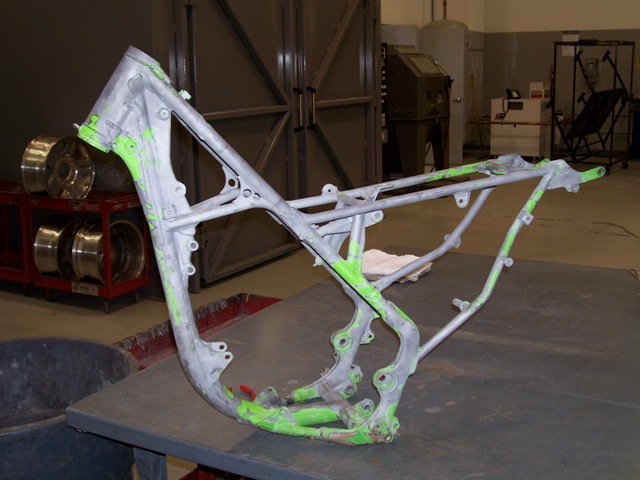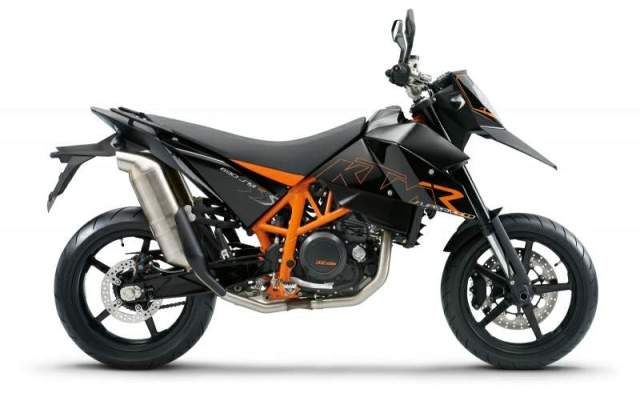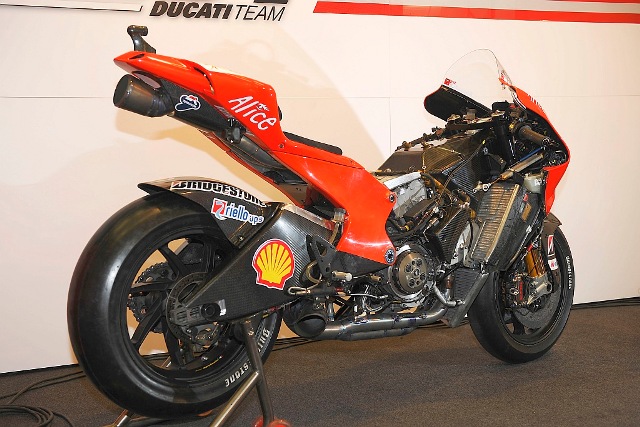Tagged: spine frame
The 4 most used motorcycle frames
All this while, I’ve been pretty intrigued by the unique triangular pattern on the frame of my KTM Duke 125. I always wondered why it was shaped that particular way and the engineering rationale behind it.
So after some research on motorcycle frame and chassis design, I learnt that there are actually only 4 frame types used on most production motorcycles. Here’s a little bit about each frame type and the bikes that use them.
Cradle
The cradle frame consists of a single top tube and a down tube (two down tubes for a double cradle) that runs from the steering head to underneath the engine. The tube loops round the engine, then goes back up to the swingarm pivot.

Single cradle frame
A single cradle frame has one down tube from the steering head while a double cradle has two, supporting the engine on either side. A variation of the single cradle, known as the split single, has two small tubes at the bottom to support the engine and exhaust pipes.

Double cradle frame
Cradle frames are the simplest of all the frames and are strong and cheap to make and are usually found in off-road motorcycles.

Double cradle on KTM 250 SXF
Trellis
The trellis frame consists of several short straight steel or aluminium tubes welded together into a series of ‘triangles’. These series of triangles give the frame its strength and stiffness.

Close up of the triangles on a trellis frame
The engine that bolts below the frame acts as a stressed member (meaning the engine bears stress like the other tubes and is considered part of the frame) further increases the frame rigidity.
The advantage of the trellis frame is that it is lighter than the cradle due to the use of the engine performing structural duties. However, it is more expensive to manufacture than a cradle frame. The engine also needs to be reinforced as a result.

A trellis frame – light yet rigid
Bikes that use the trellis frames in their chassis design are the Ducati 848 Street Fighter and KTM 690 SMR.

KTM 690 SMR

Ducati 848 Street Fighter
Spine
Like the name suggests, the spine frame comprises a large diameter tube which acts as the ‘spine’ of the bike, upon which the engine and other components are hung.

Spine frame
The advantage of this frame type is that it is easily concealable, thus allowing for flexibility in the design of the bike. Notice the frame is not visible underneath the engine on the Triumph Thunderbird.

Triumph 900 Thunderbird
Beam (aka Perimeter)
The beam or perimeter frame was made possible with advances in material technology. As aluminium alloy use became more widespread in frame materials, manufacturers exploited the stiffness of the material and created the beam frame.
The beam frame consists of two ‘box section beams’ joining the steering head with the swing arm in the shortest possible length for maximum rigidity and stiffness. The engine then fits into the frame as a stressed member.

Beam (Perimeter) frame
Beam frames have the advantage of being very light and strong at the same time. They are now the most popular frame design for sport bikes, being used on the Aprilia Tuono V4R and the Buell Lightning XB12.

Aprilia Tuono V4R

Buell Lightning XB12
The Future – Frameless?
While learning about the frames above, I found this patent filed by Ducati with the United States Patent Office which describes a bike without a traditional frame.
The steering head transitions into a box section that connects directly to the engine. At the rear, the configuration is similar, with the swingarm and seat also connecting directly to the engine. This frameless configuration was used on the MotoGP bike raced by Casey Stoner to 4th place in the 2009 World Championships.

Ducati ‘frameless’ patent – US2009/0308677 A1

Casey Stoner’s Ducati GP9
Do you have any comments or feedback for my article? Most welcome below!
